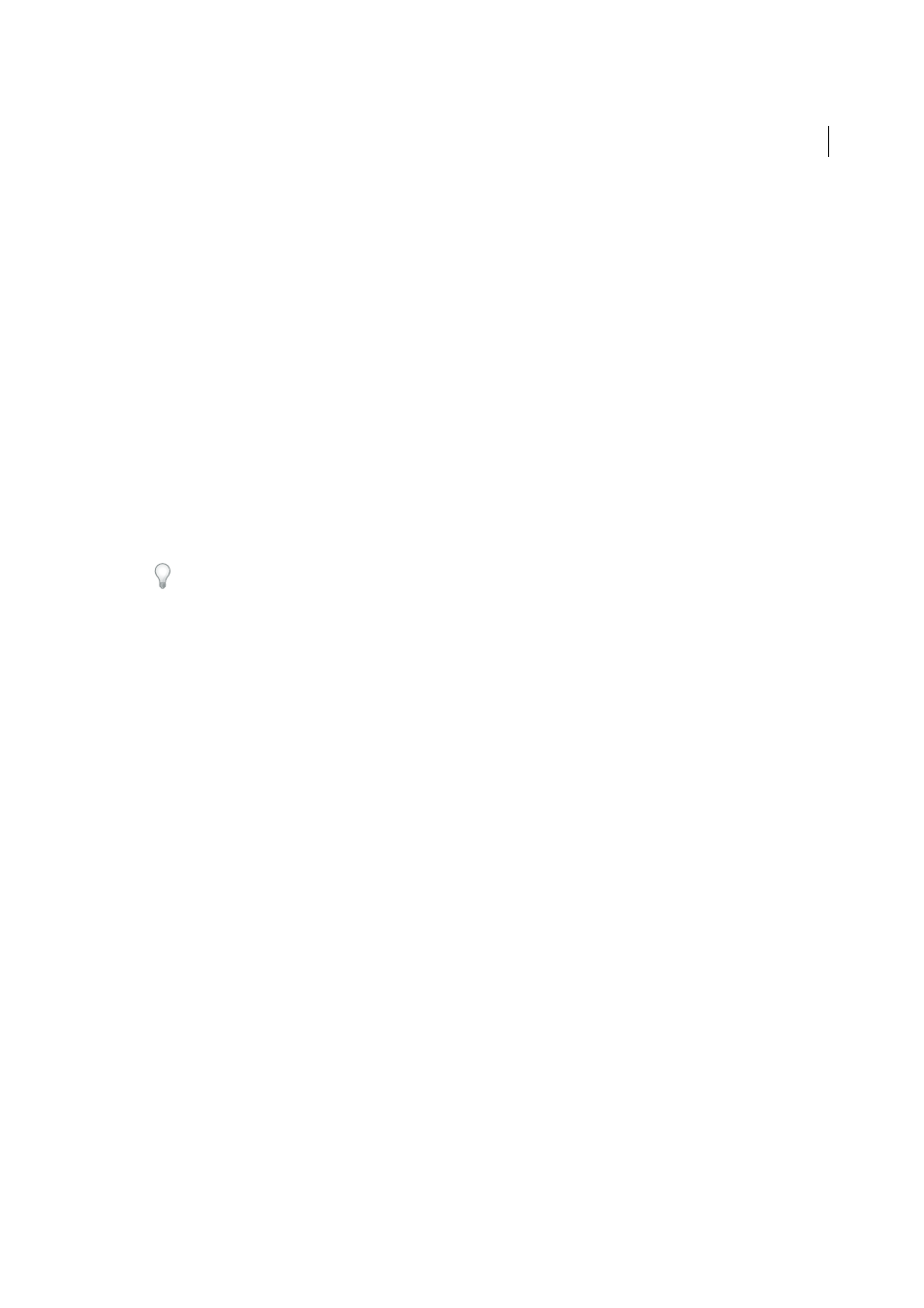Overprint black, Simulate or discard overprinting, Trapping – Adobe Illustrator CC 2015 User Manual
Page 501: About trapping

496
Printing
Last updated 6/5/2015
Overprint black
To overprint all black in your artwork, select the Overprint Black option in the Print dialog box when you create color
separations. This option works on all objects that have black applied through the K color channel. However, it does not
work for objects that appear black because of their transparency settings or graphic styles.
You can also use the Overprint Black command to set up overprinting for objects that contain a specific percentage of
black. To use the Overprint Black command:
1
Select all the objects you might want to overprint.
2
Choose Edit > Edit Colors > Overprint Black.
3
Enter the percentage of black you want to overprint. All objects with the specified percentage will overprint.
4
Select Fill, Stroke, or both to specify how to apply the overprinting.
5
To overprint process colors that include cyan, magenta, or yellow as well as the specified percentage of black, select
Include Blacks with CMY.
6
To overprint spot colors whose process equivalents include the specified percentage of black, select Include Spot
Blacks. If you are overprinting a spot color that contains process colors as well as the specified percentage of black,
select both Include Blacks with CMY and Include Spot Blacks.
To remove overprinting from objects that contain a specific percentage of black, select Remove Black instead of Add
Black in the Overprint Black dialog box.
Simulate or discard overprinting
In most cases, only separation devices support overprinting. When you print to a composite, or when your artwork
contains overprinted objects that interact with transparency objects, you choose to simulate or discard overprinting.
1
Choose File > Print.
2
Select Advanced on the left side of the Print dialog box.
3
Select Simulate or Discard from the Overprints menu.
Trapping
About trapping
Where colors printed from separate plates overlap or adjoin one another, press misregistration can cause gaps between
colors on the final output. To compensate for potential gaps between colors in artwork, print shops use a technique
called trapping to create a small area of overlap (called a trap) between two adjoining colors. You can use a separate,
dedicated trapping program to create traps automatically, or you can use Illustrator to create traps manually.
There are two types of trap: a spread, in which a lighter object overlaps a darker background and seems to expand into
the background; and a choke, in which a lighter background overlaps a darker object that falls within the background
and seems to squeeze or reduce the object.